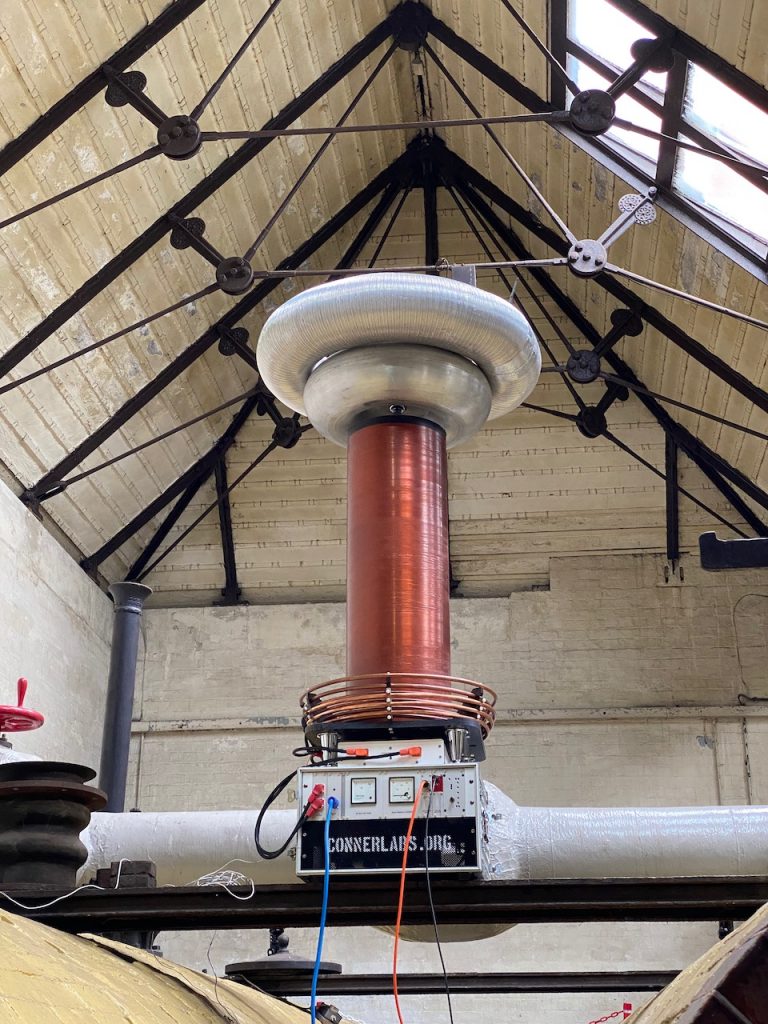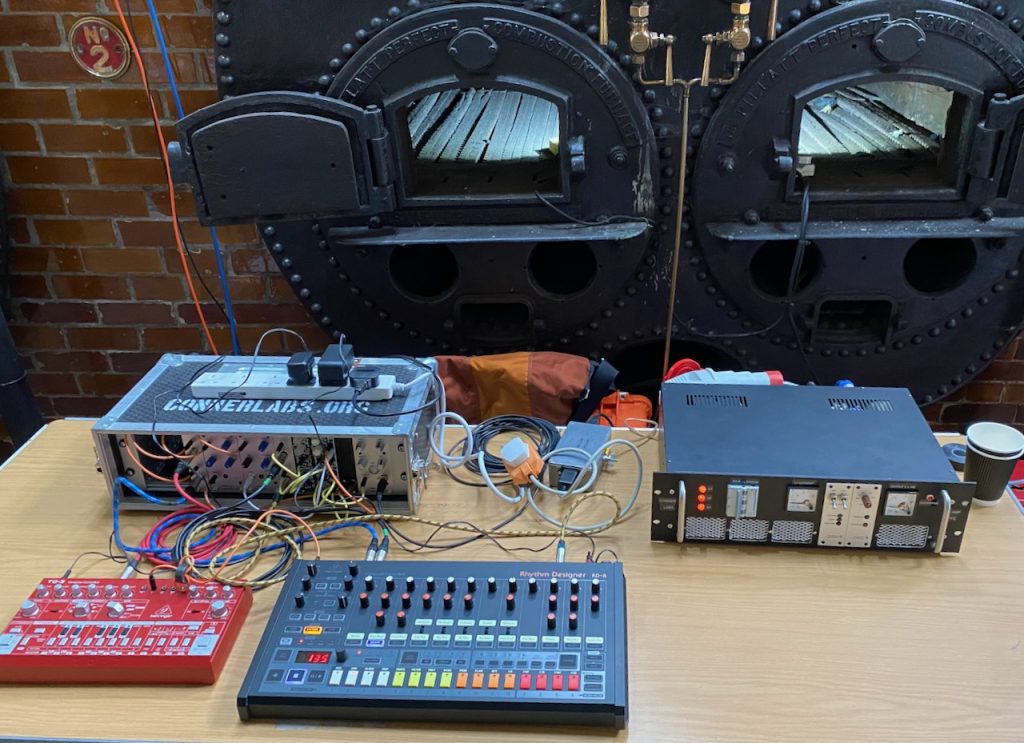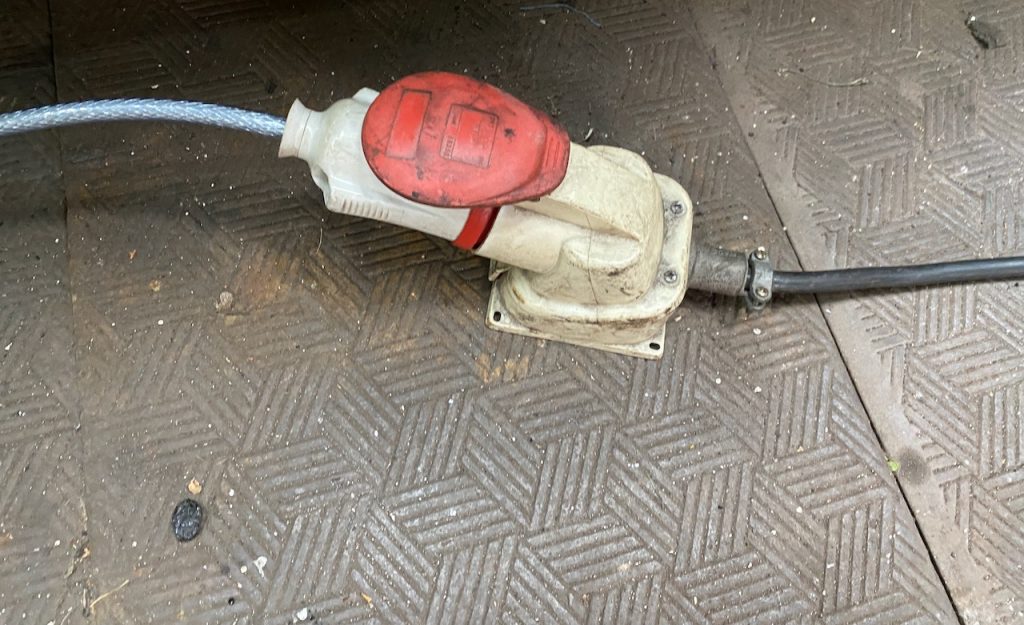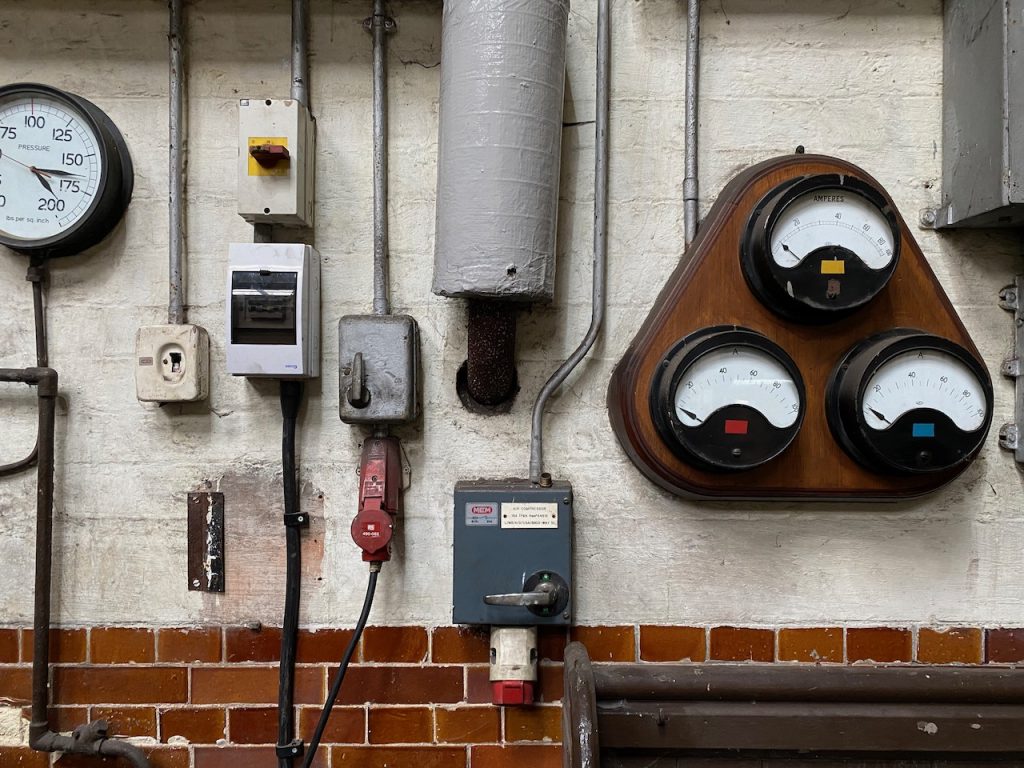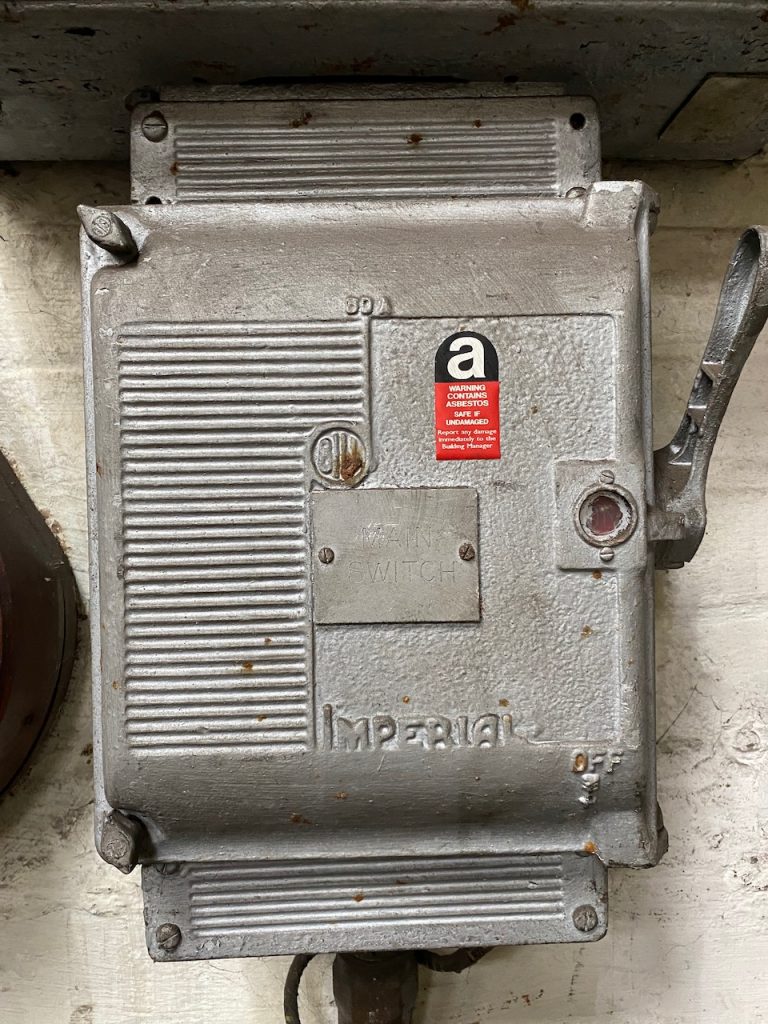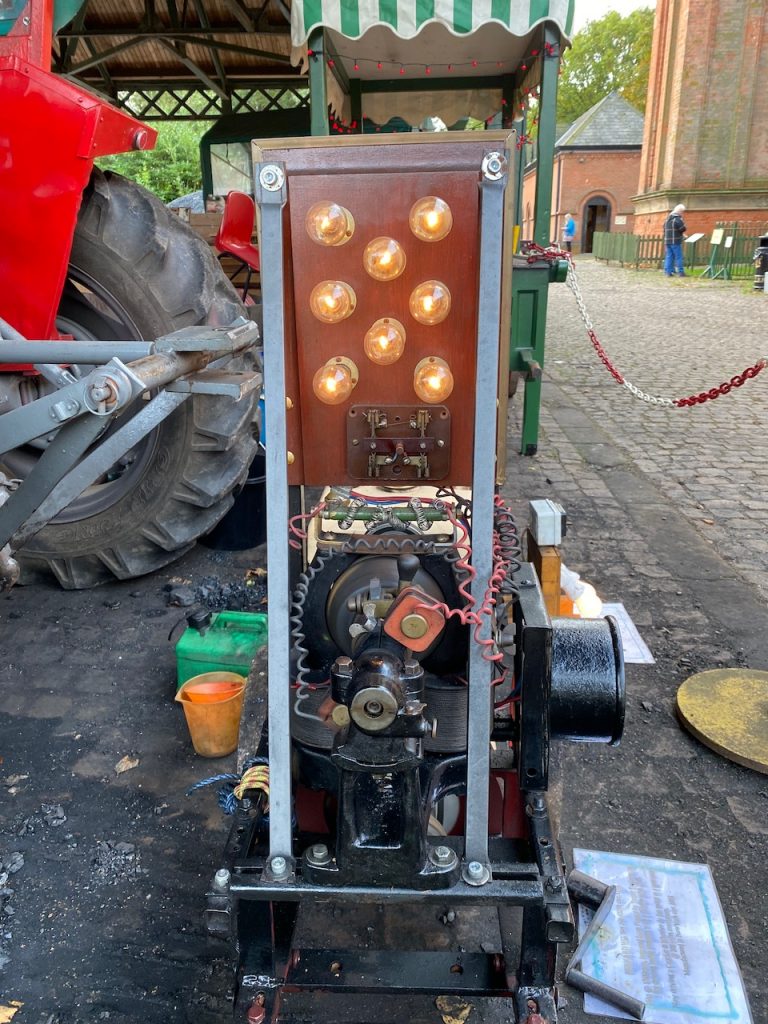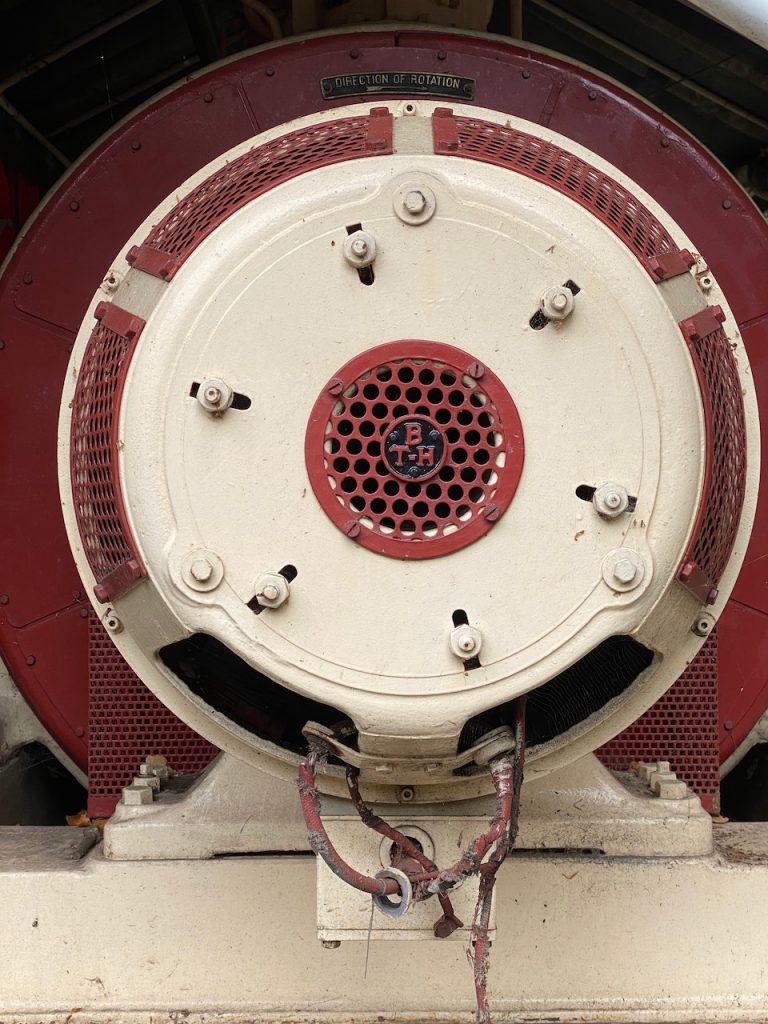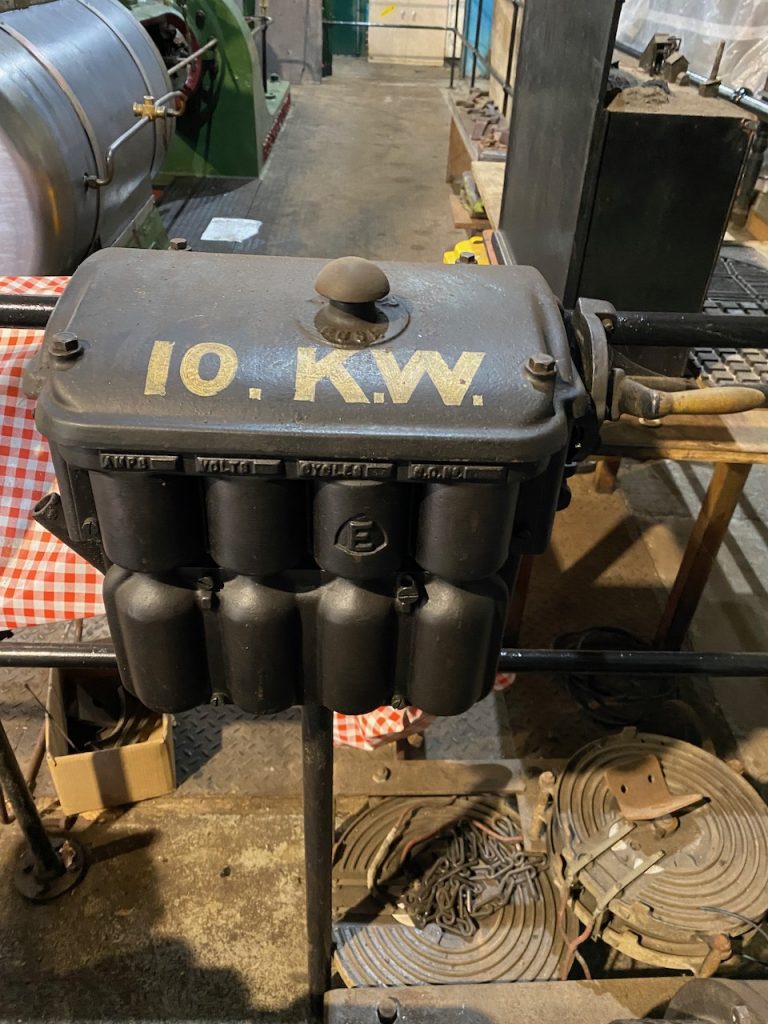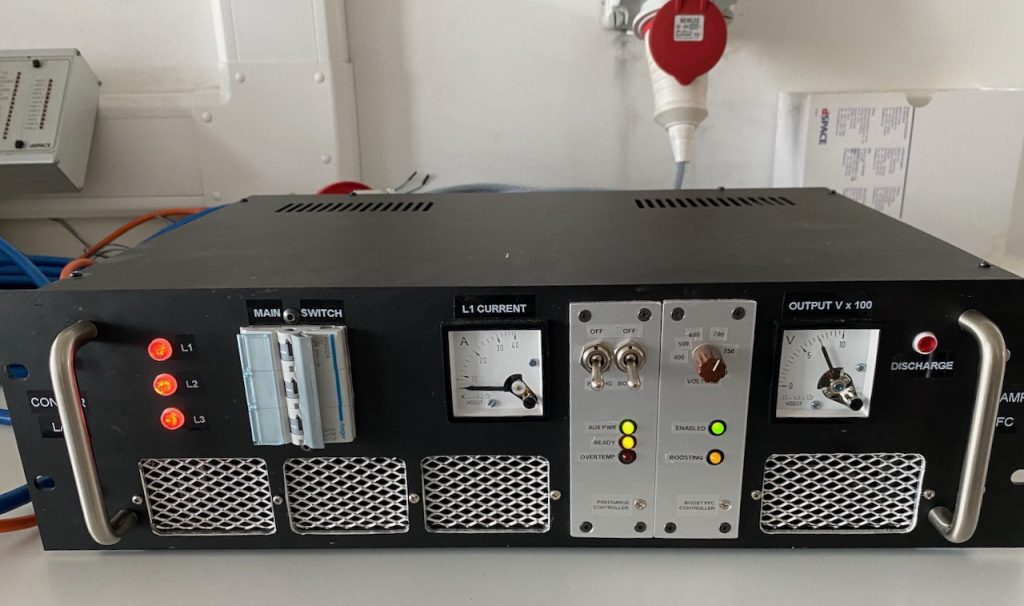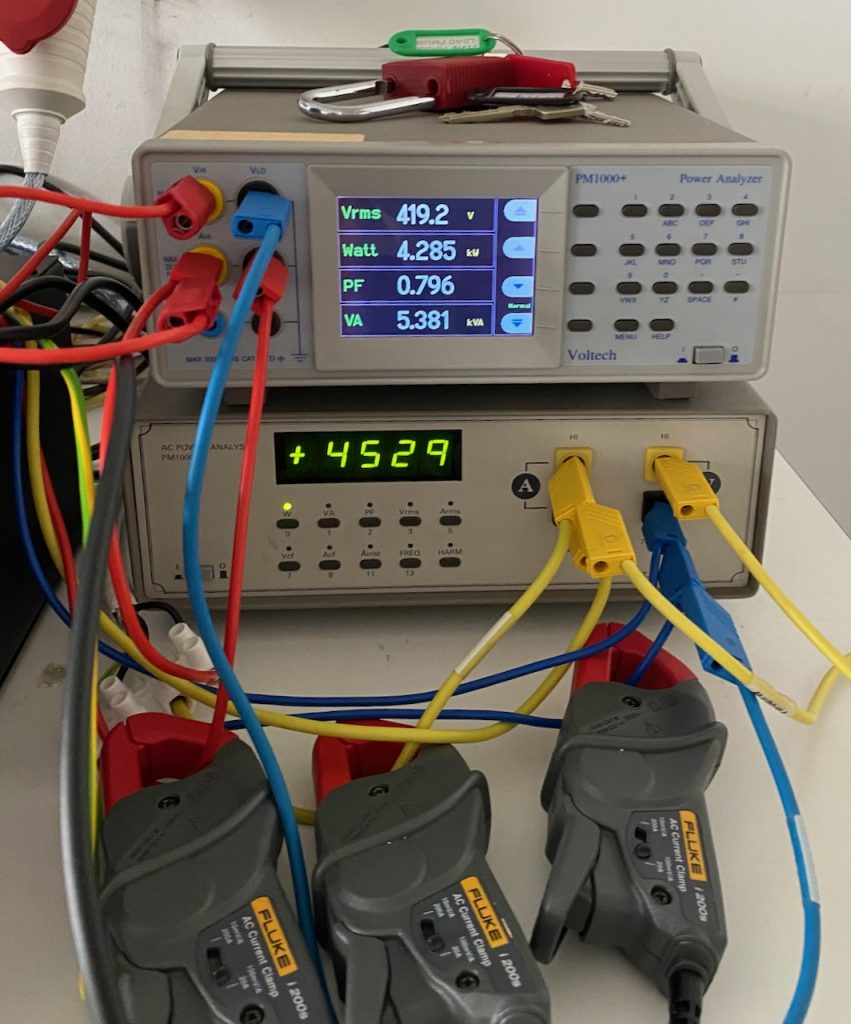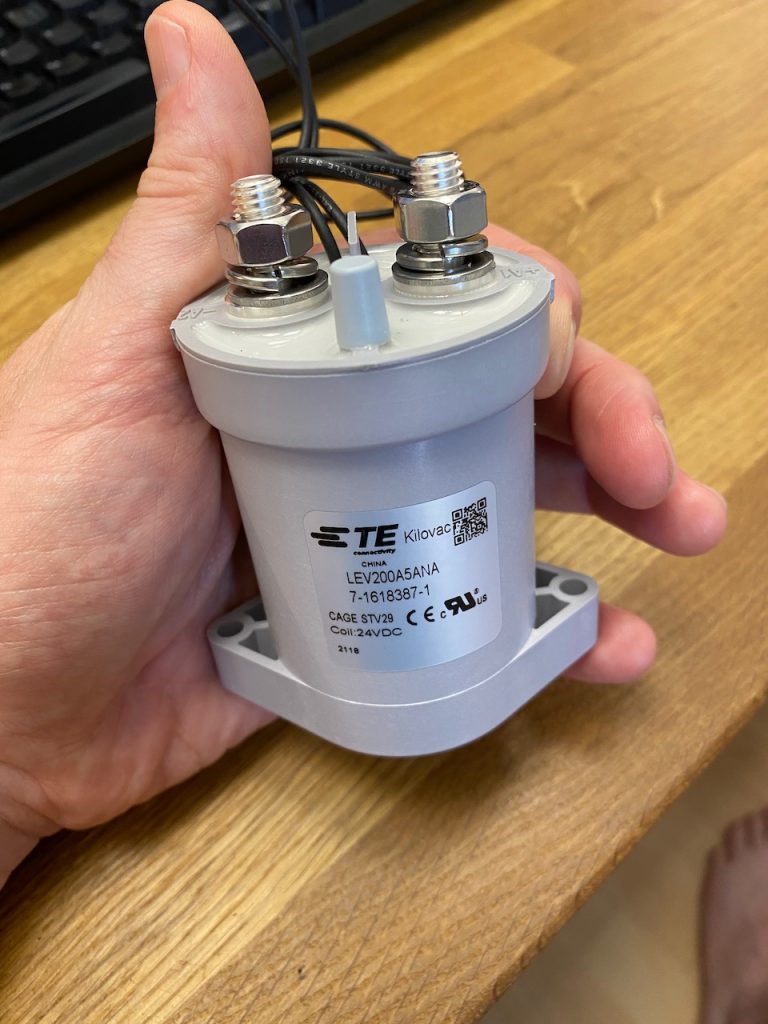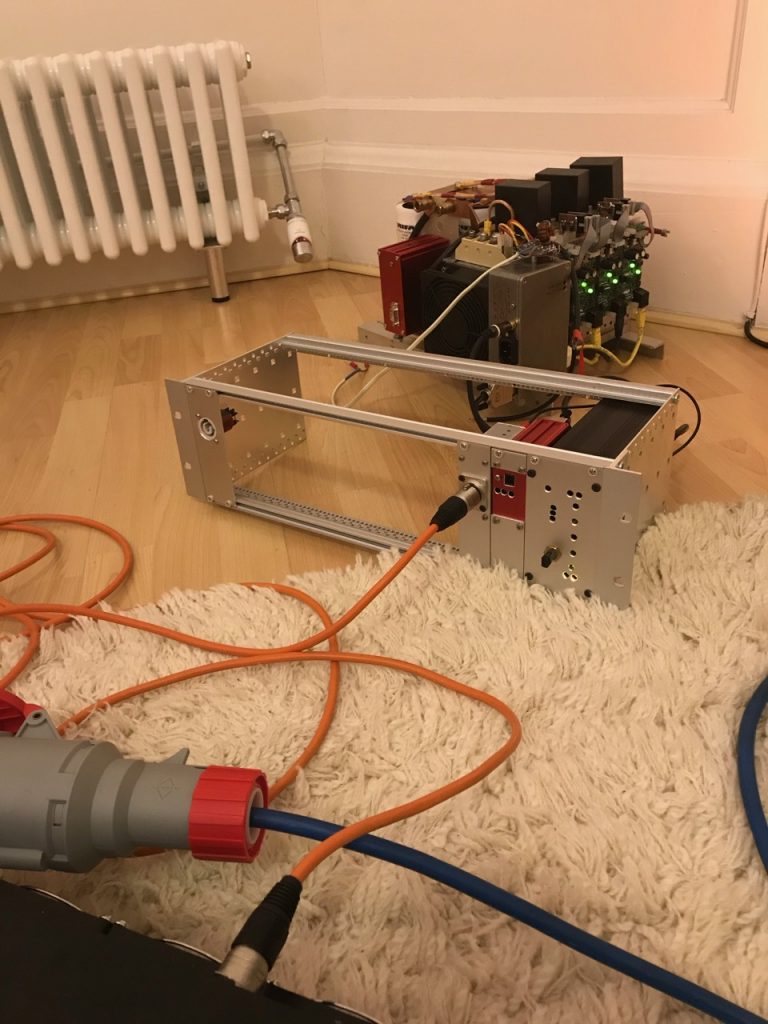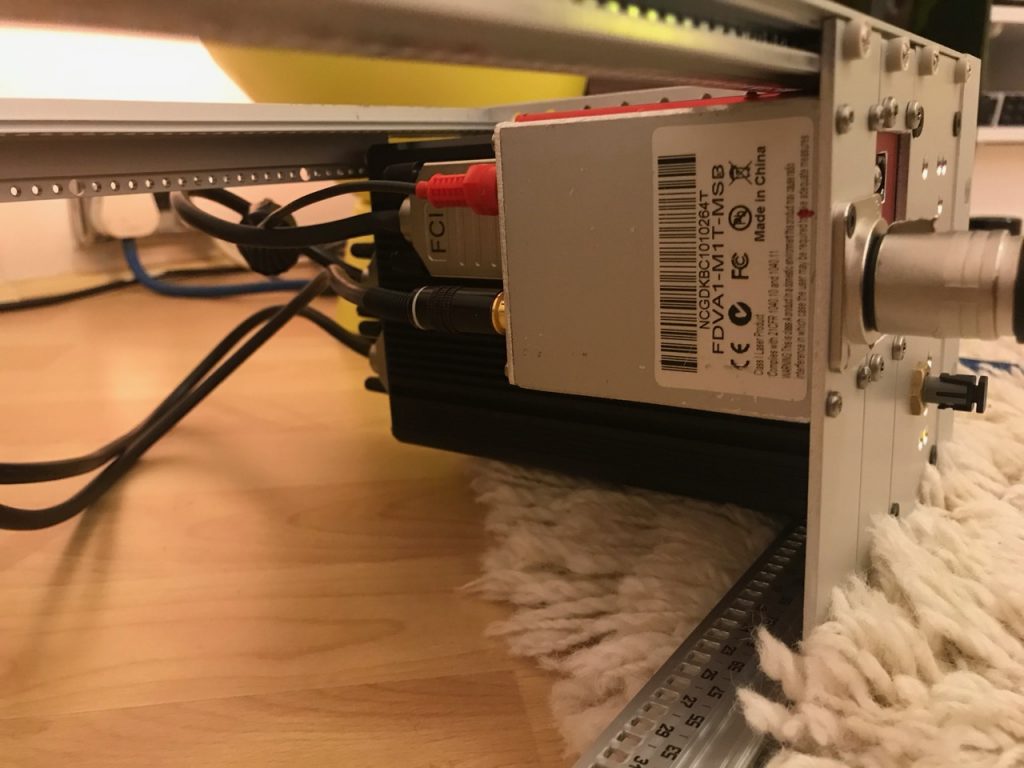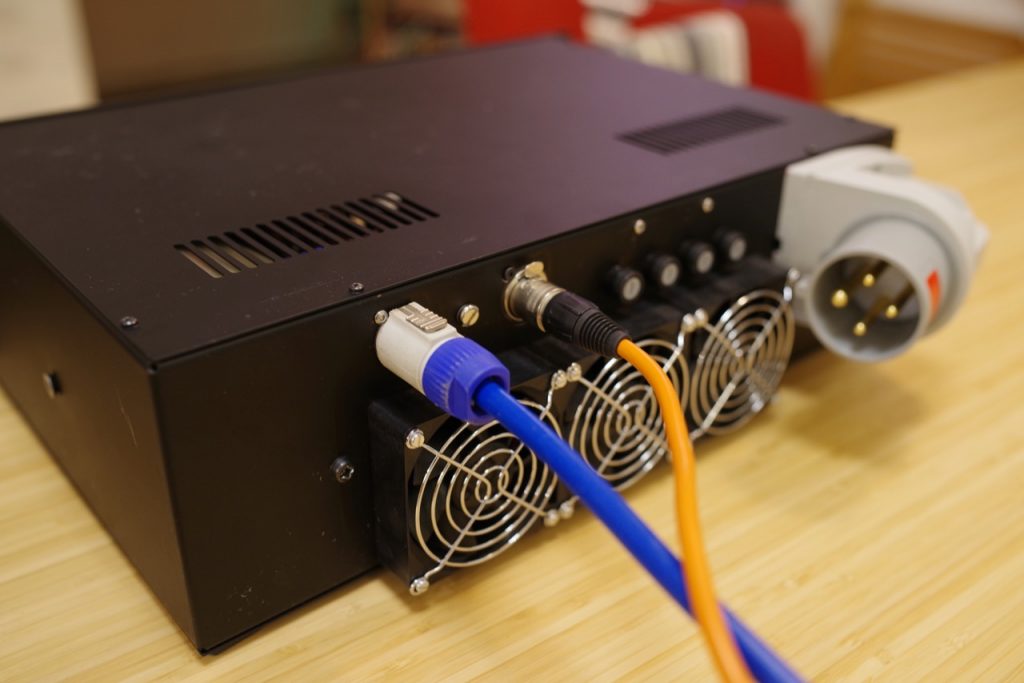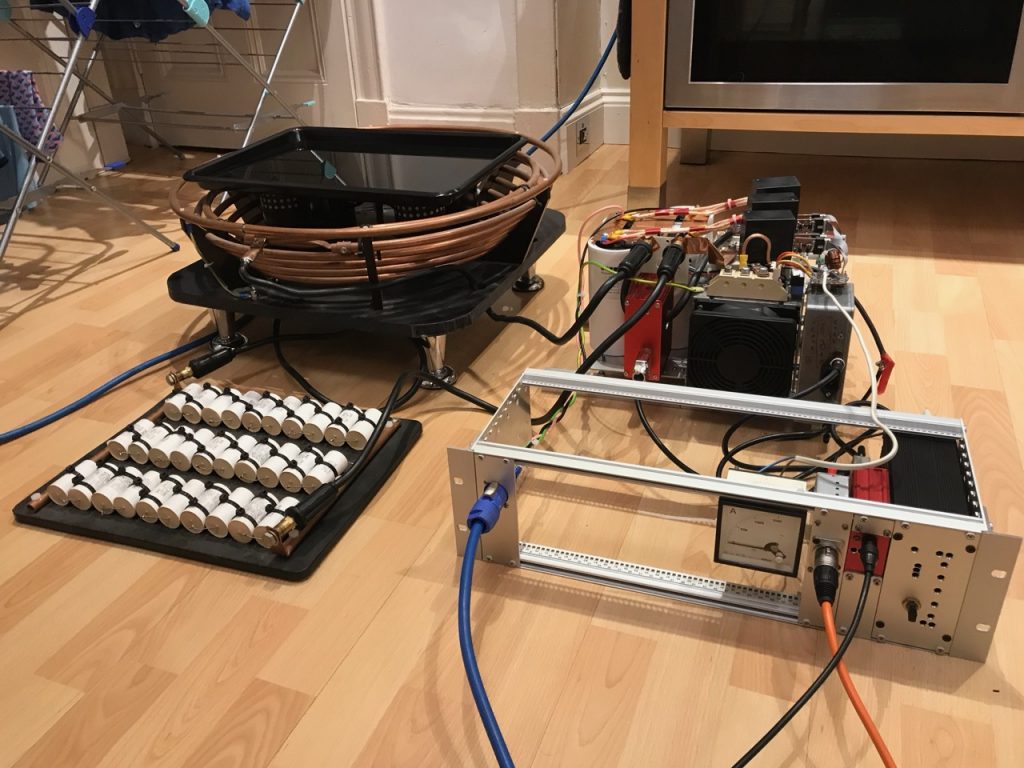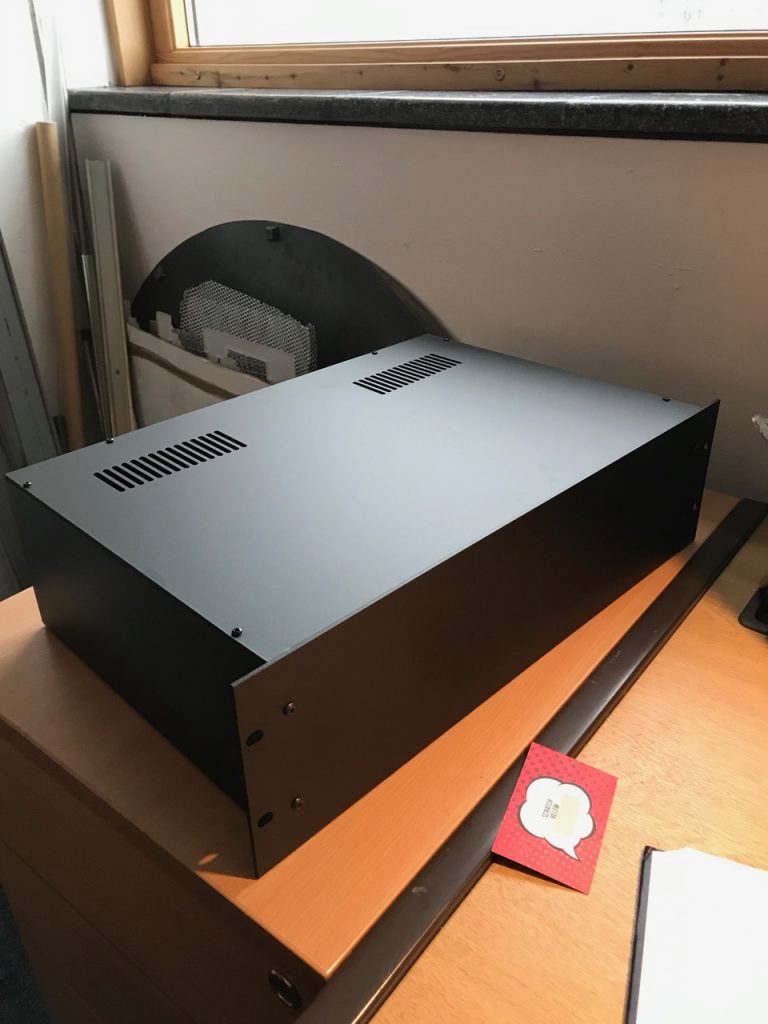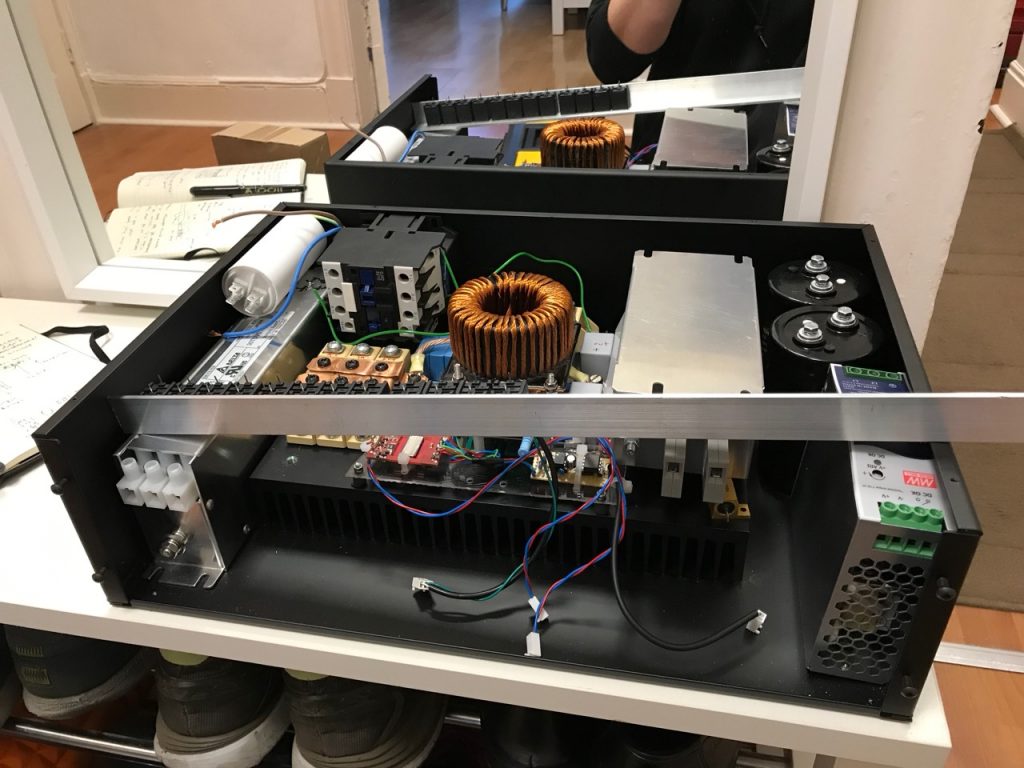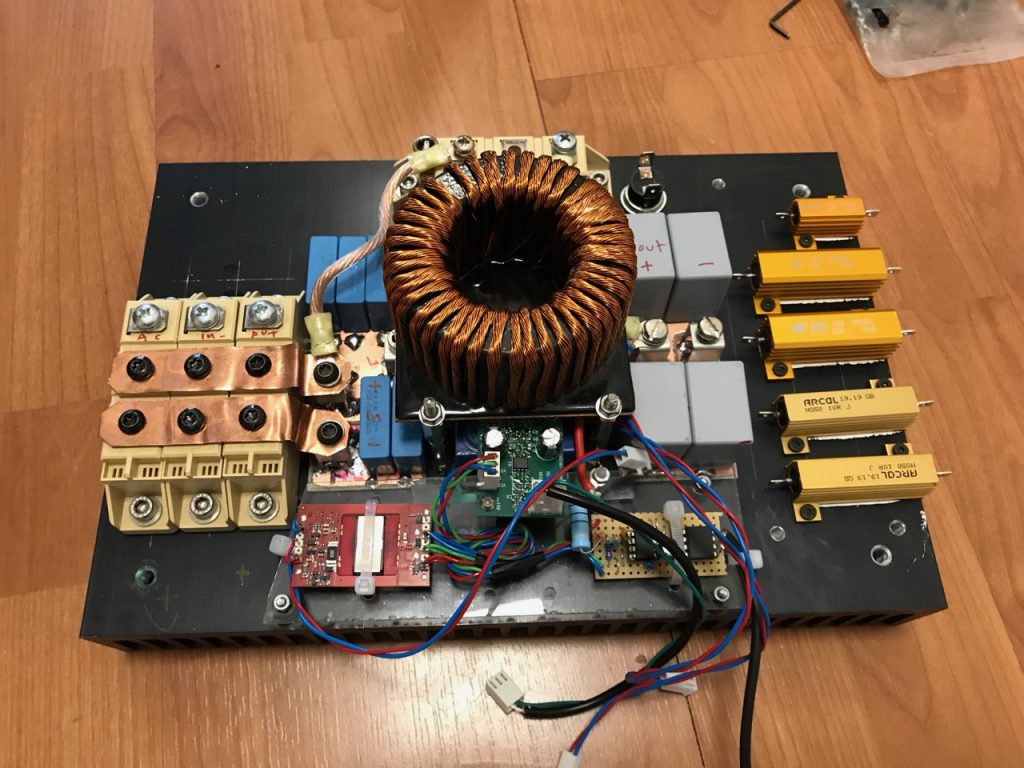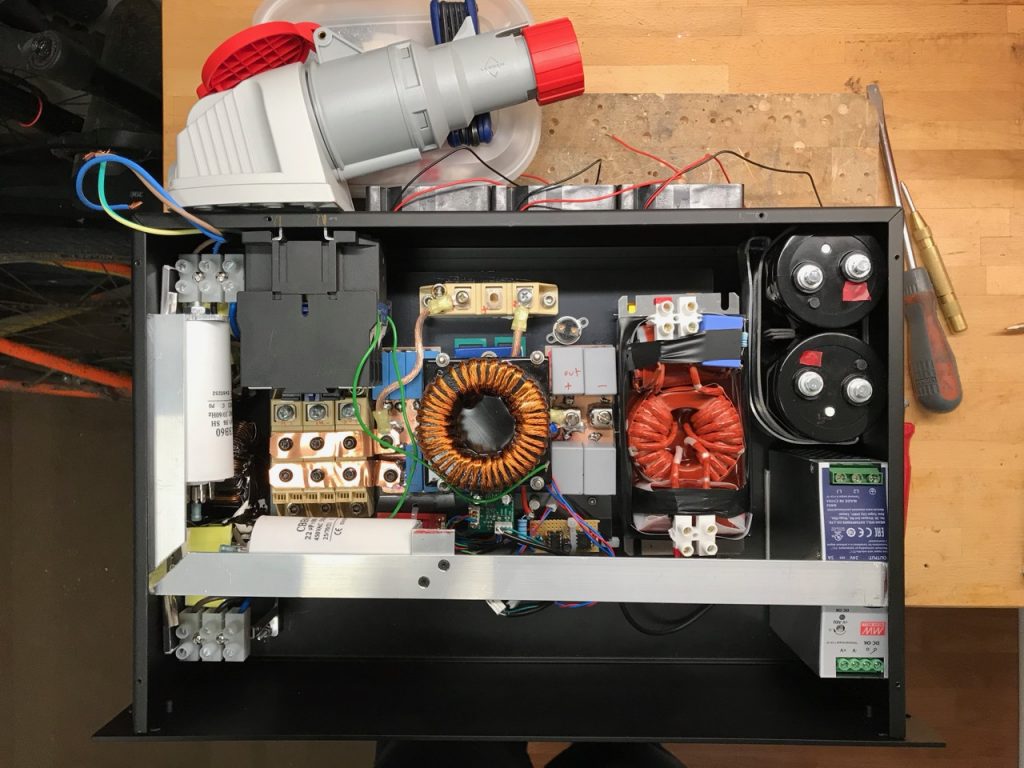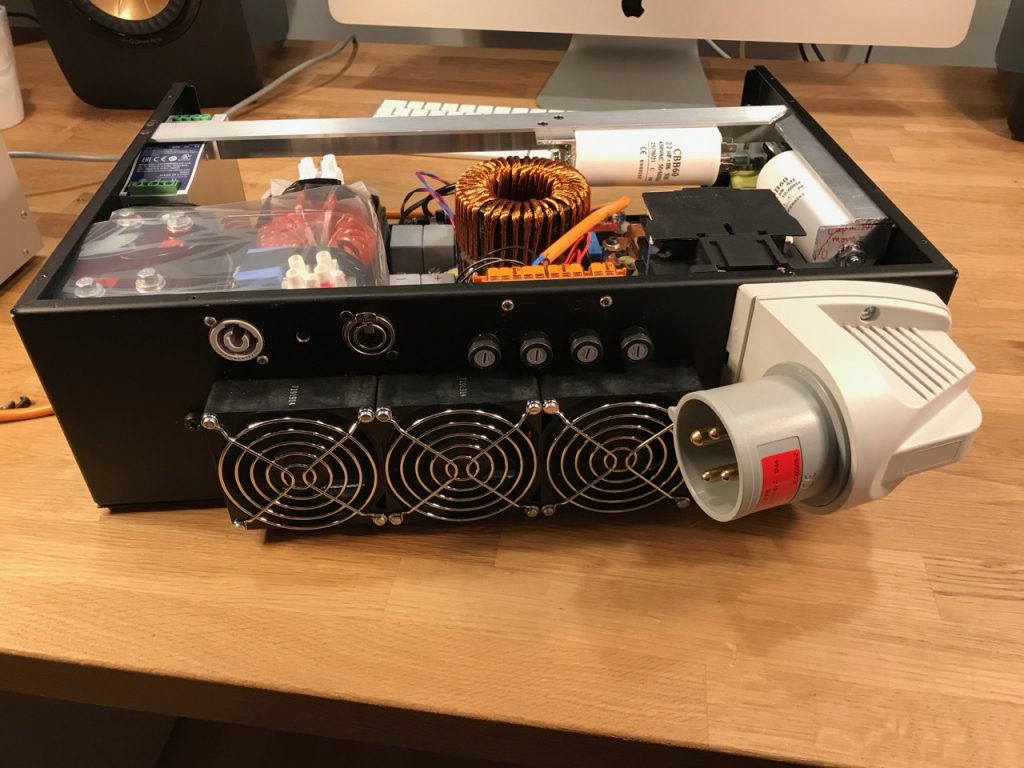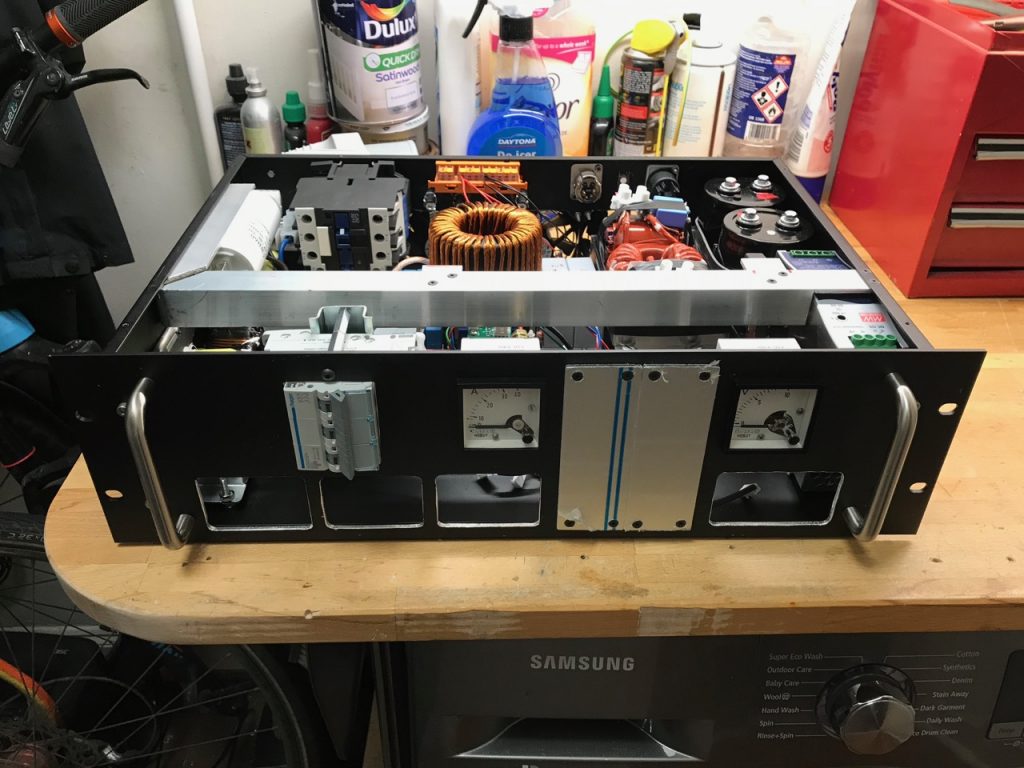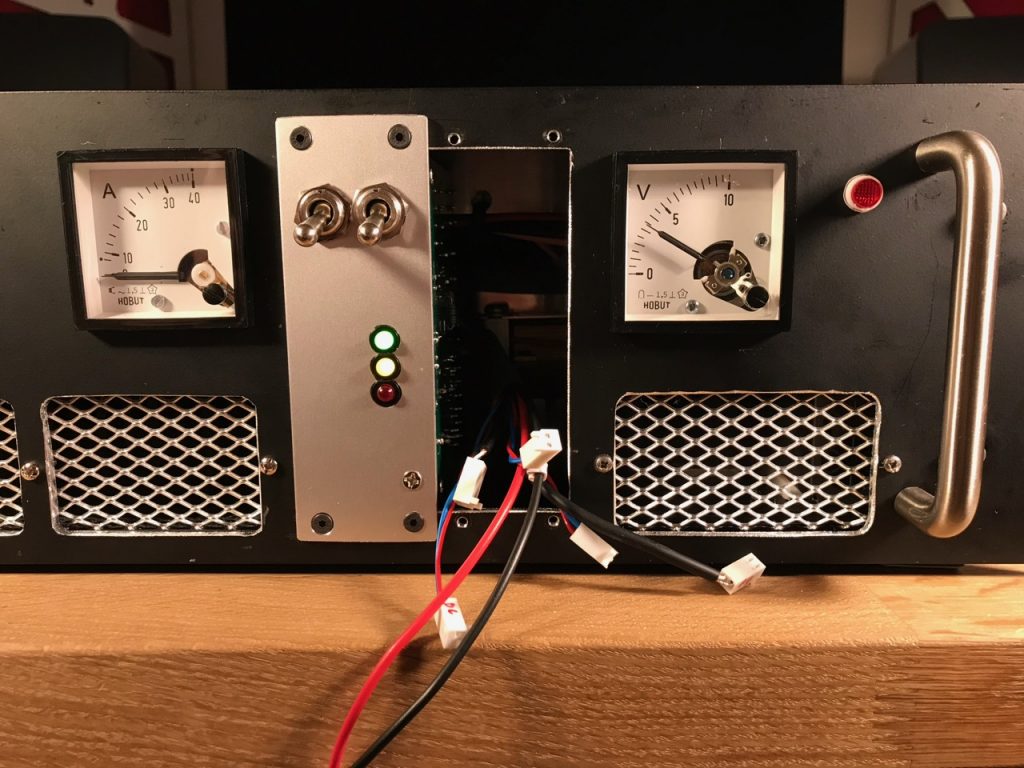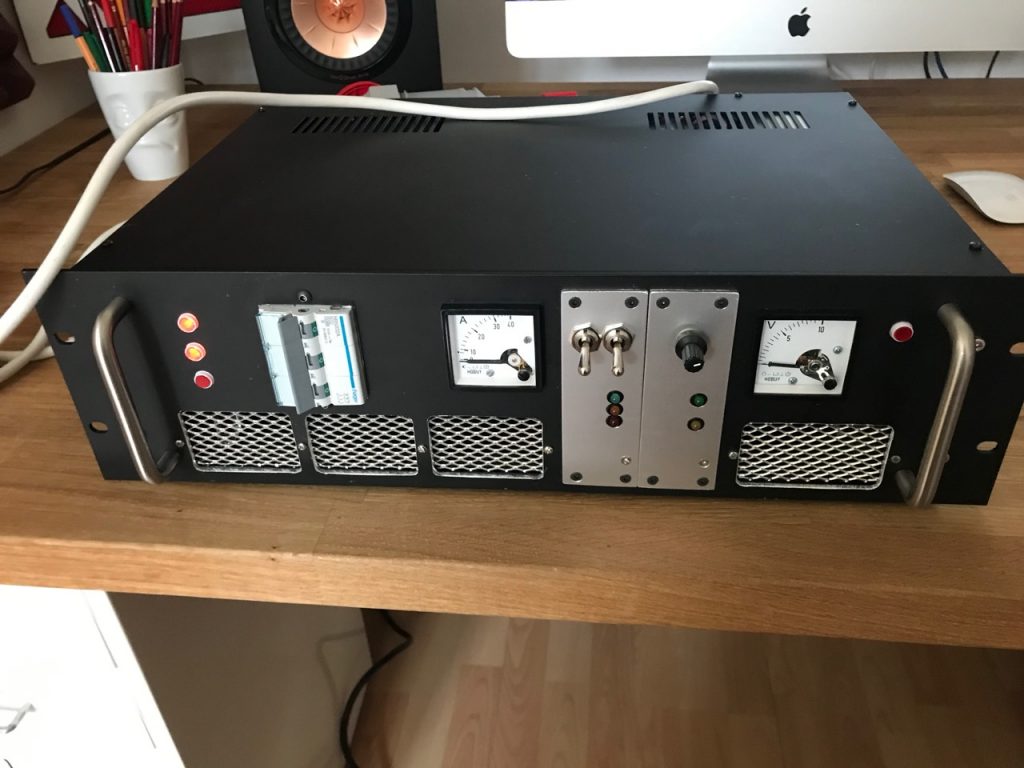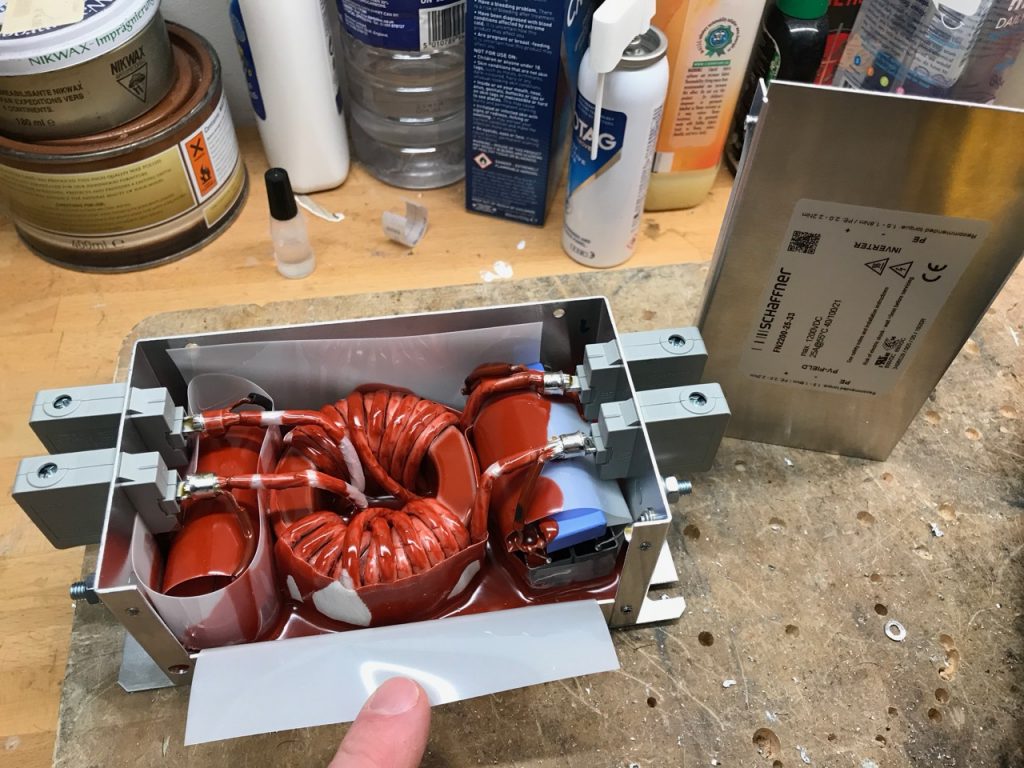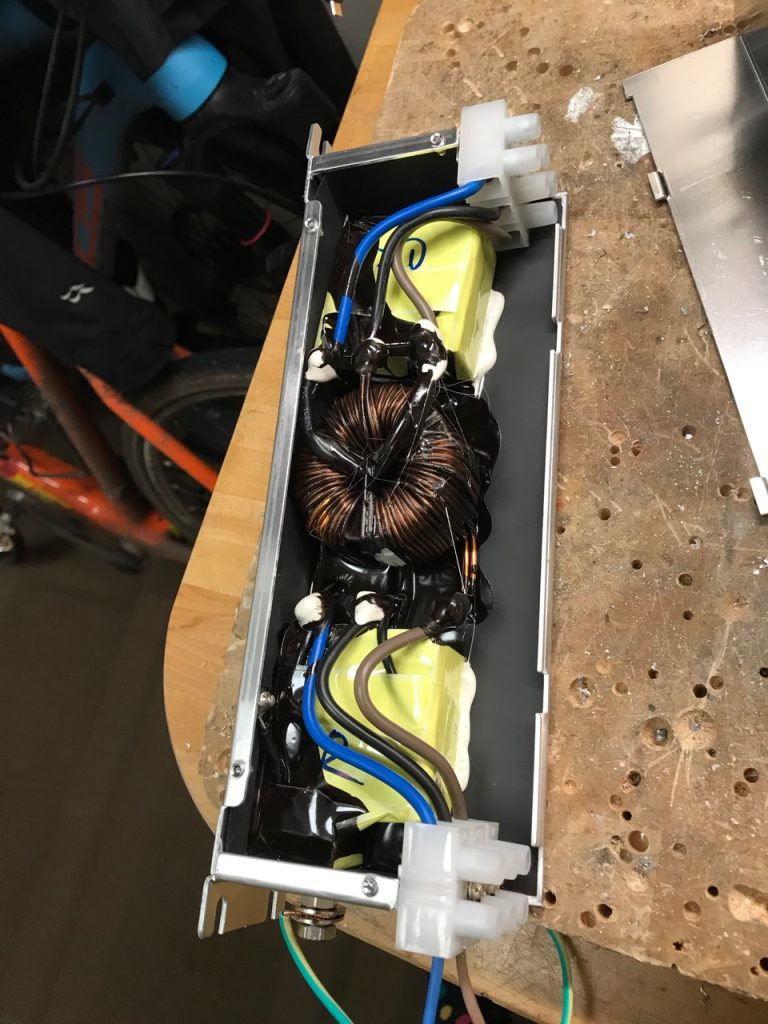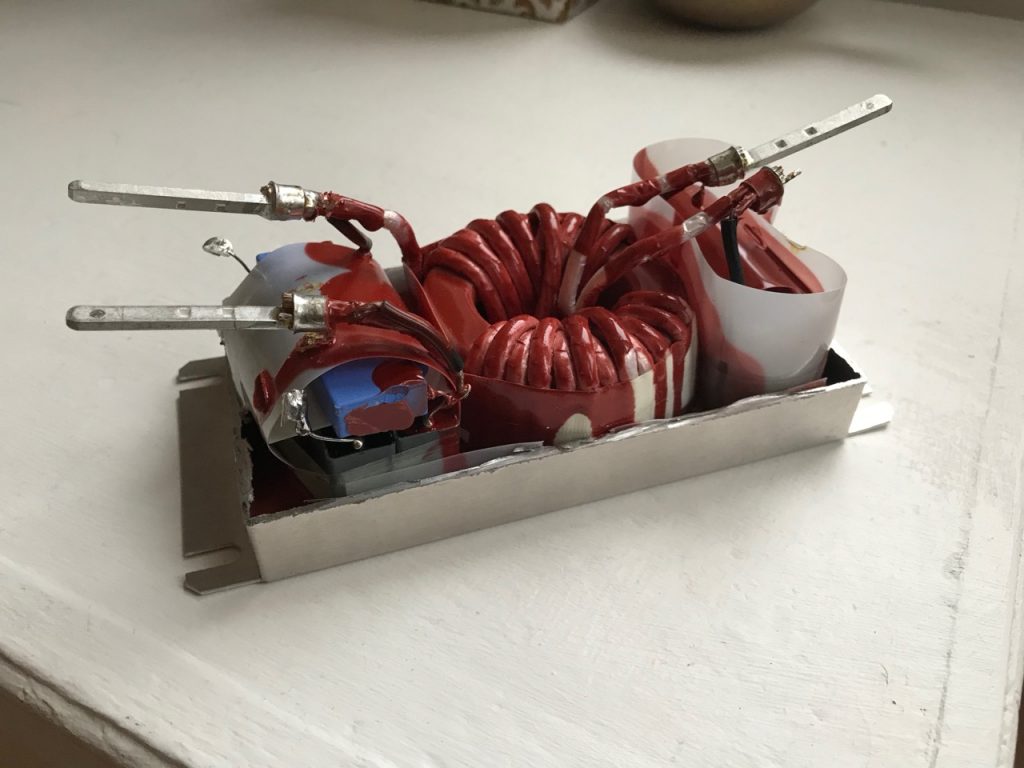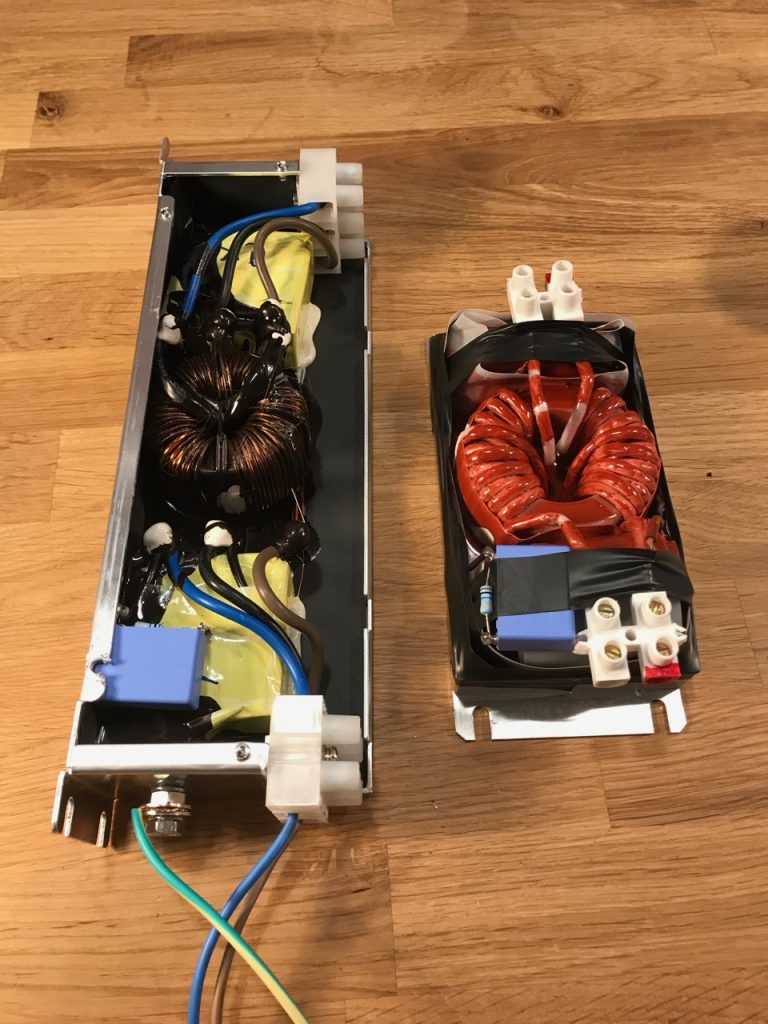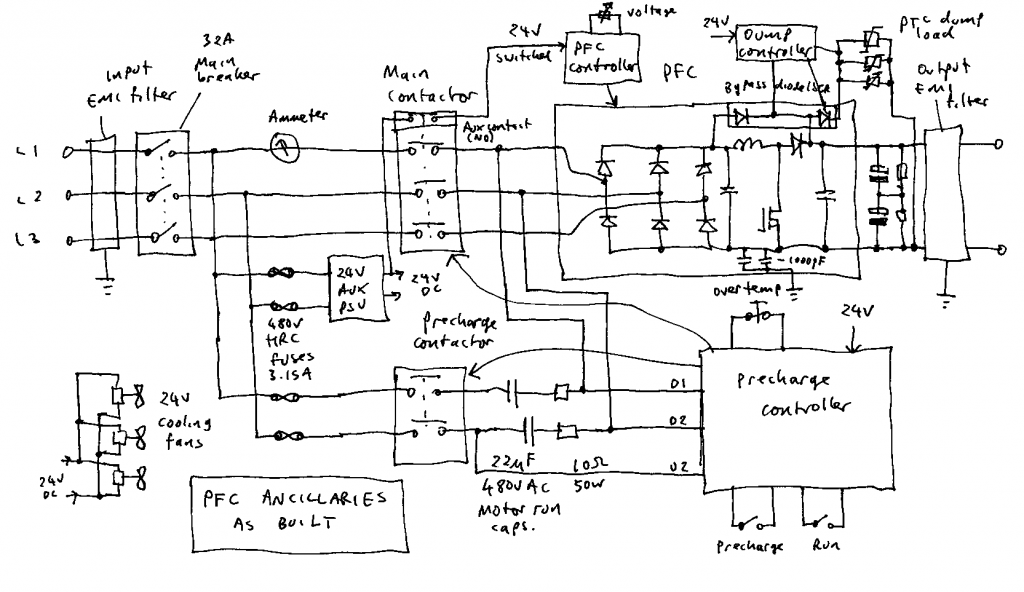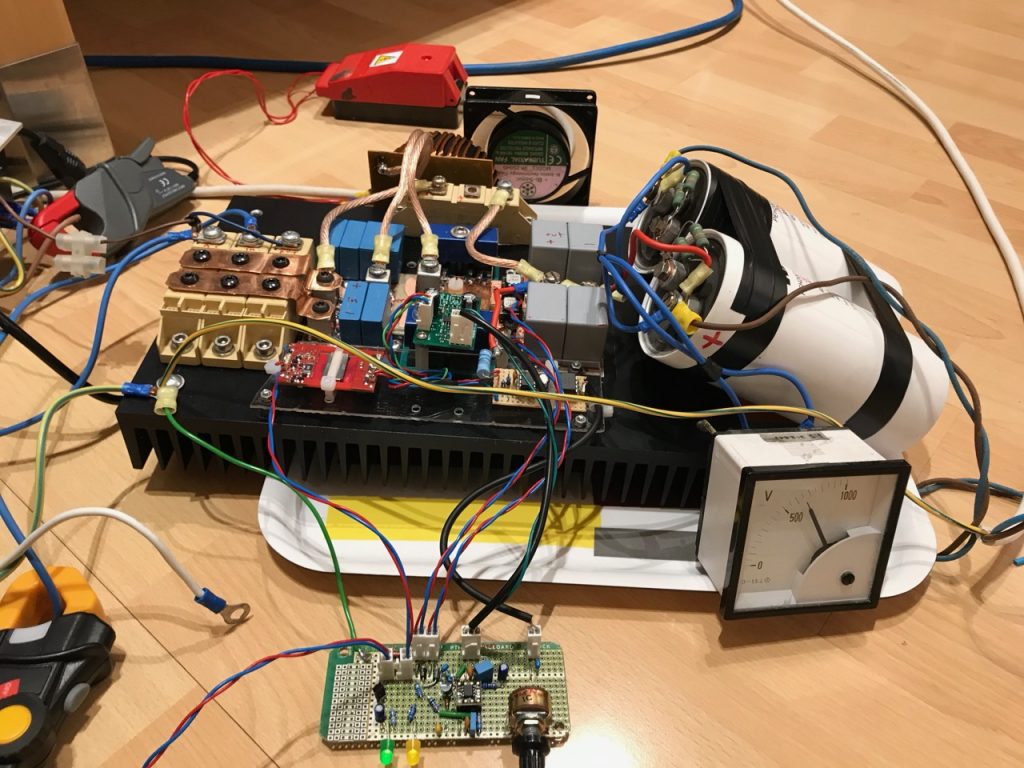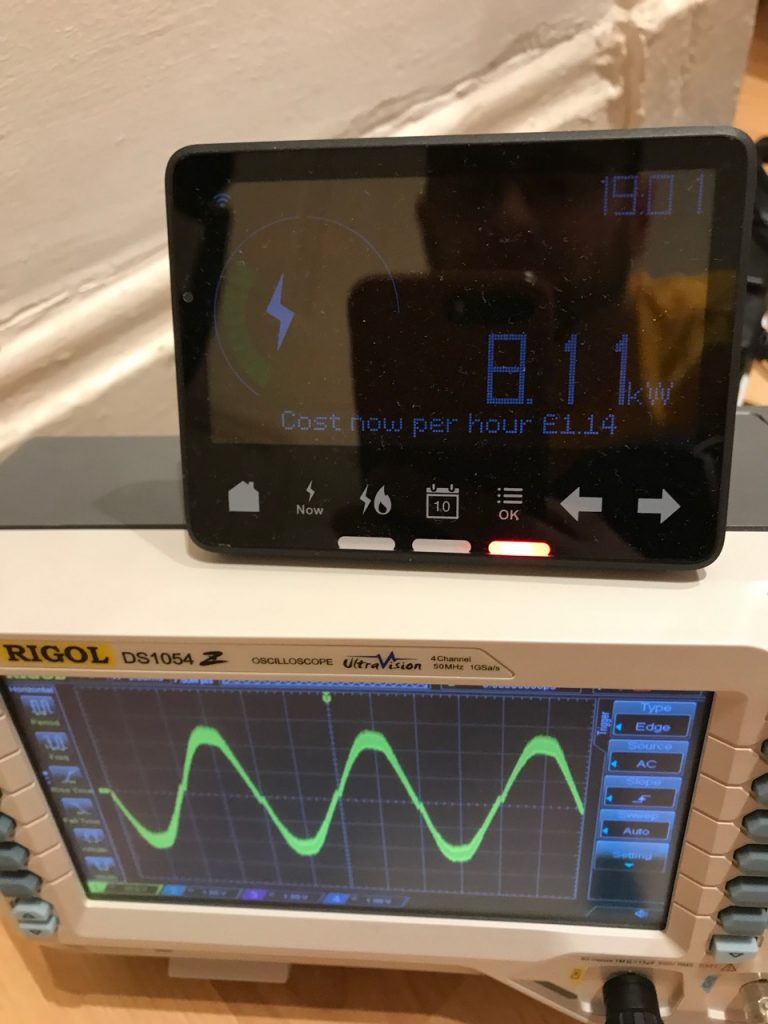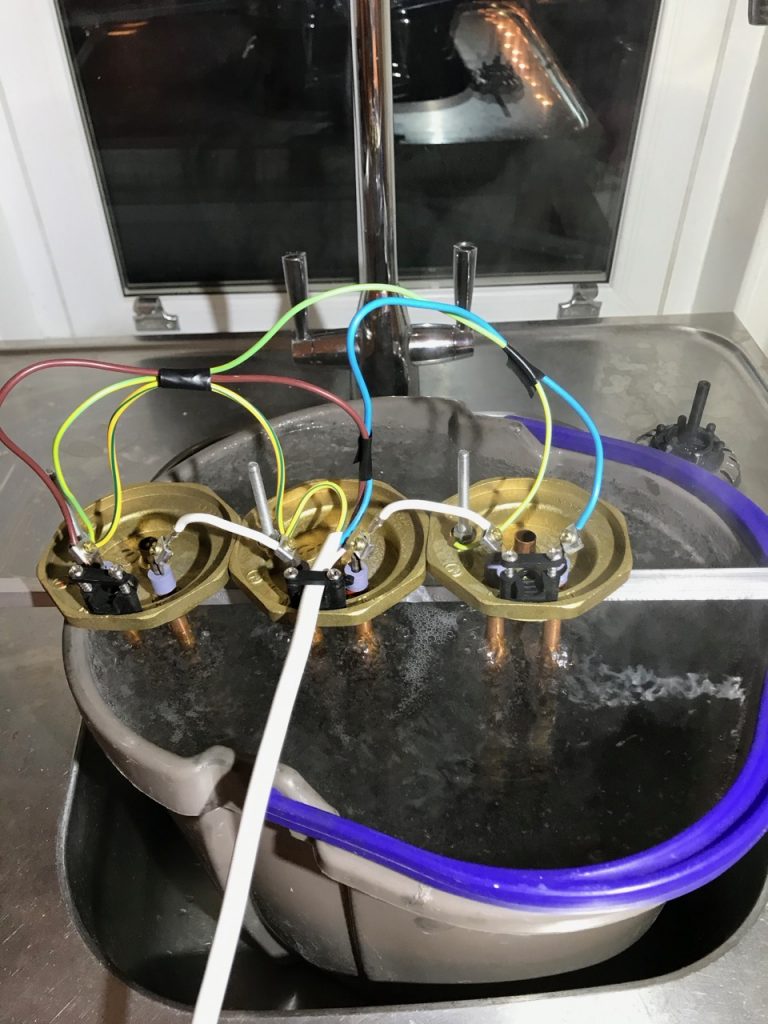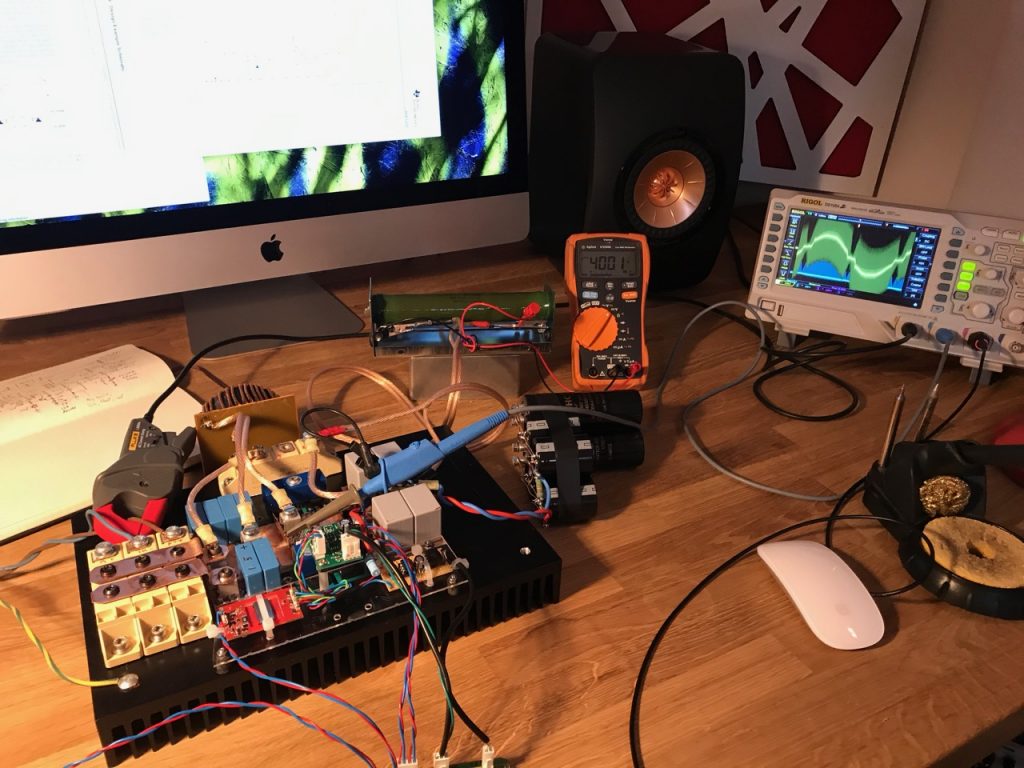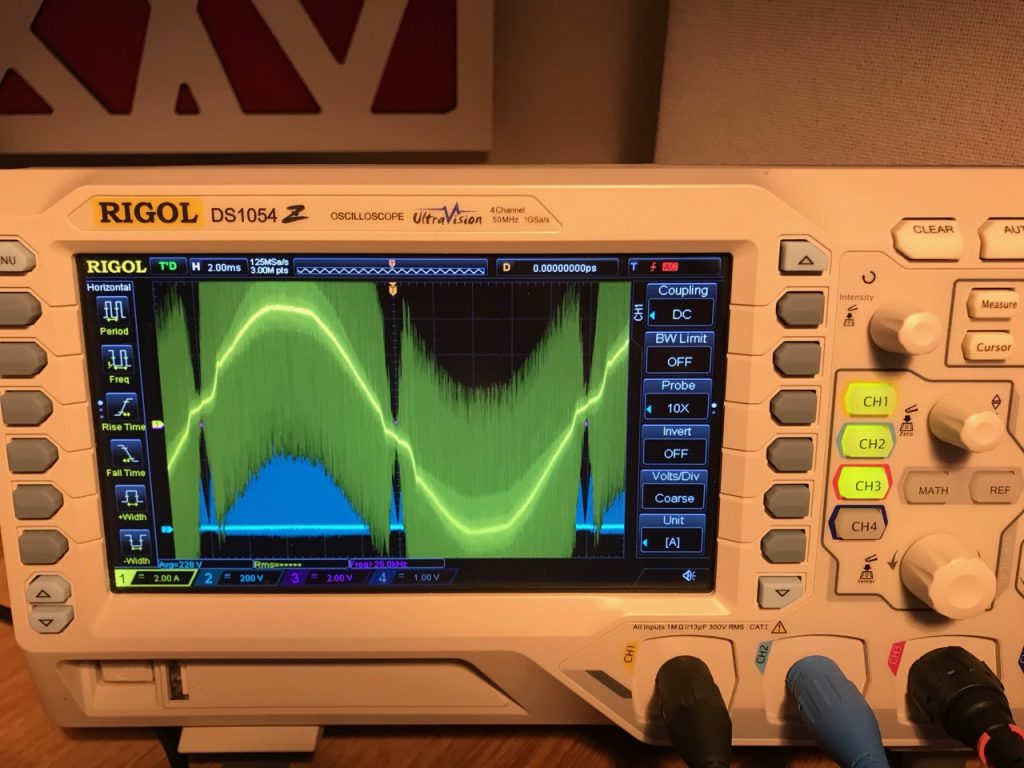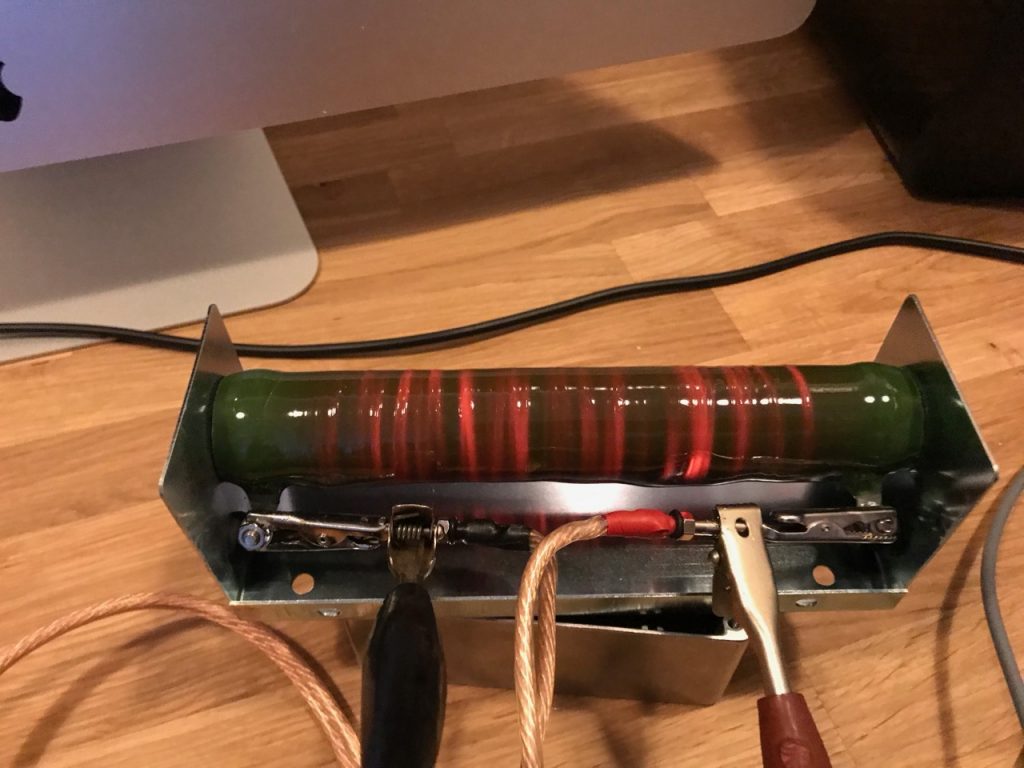During Odin’s final performance at EMF there was a loud bang and everything stopped working. I decided it wasn’t worth attempting a field repair as there were basically only 20 minutes of the festival left and most of the potential spectators were heading home.


Reviewing some video of the fatal performance, I could see a blue light shining out of the PFC after which Odin’s spark output rapidly declined to nothing. This implied that the coil was still working after the PFC died, and might actually be undamaged, apart from the melted tank capacitor that I later replaced with Dawncaps.
I started by investigating the PFC. The innards were well and truly splattered. Both SiC MOSFETs had cratered, the legs of one boost diode were partly eaten away, and a thin layer of vaporised copper covered everything. Even the ferrite core of one of the current transformers had partly melted.

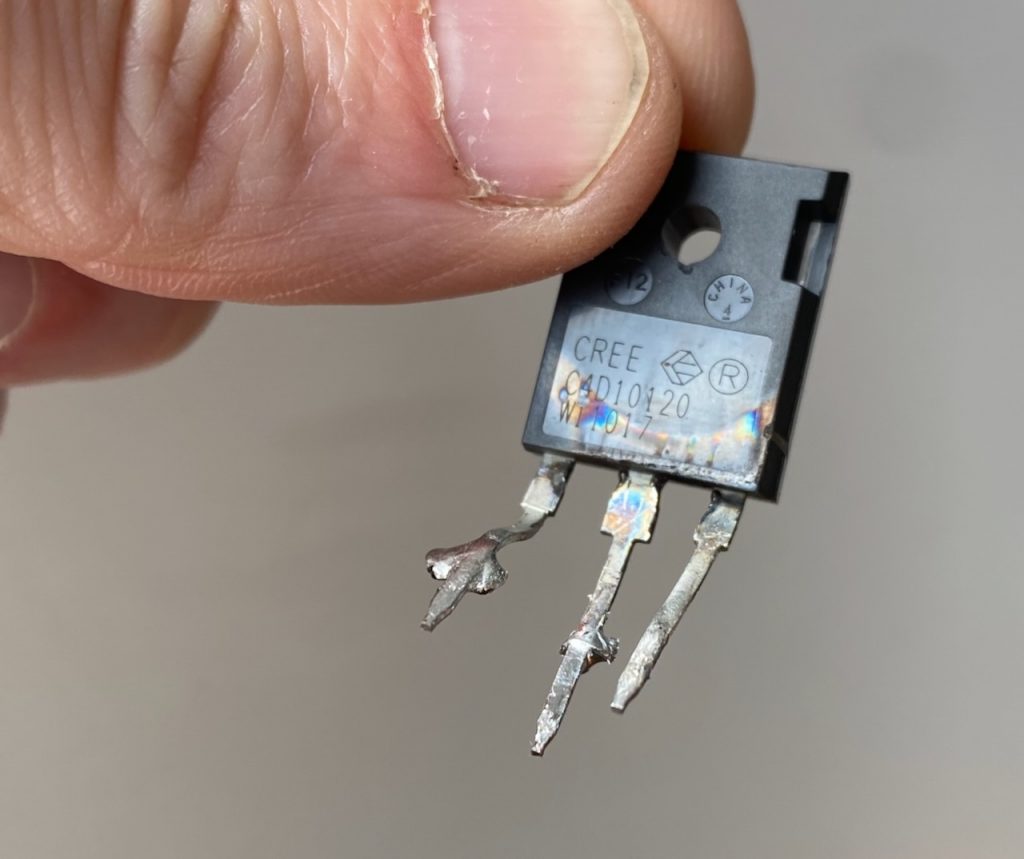
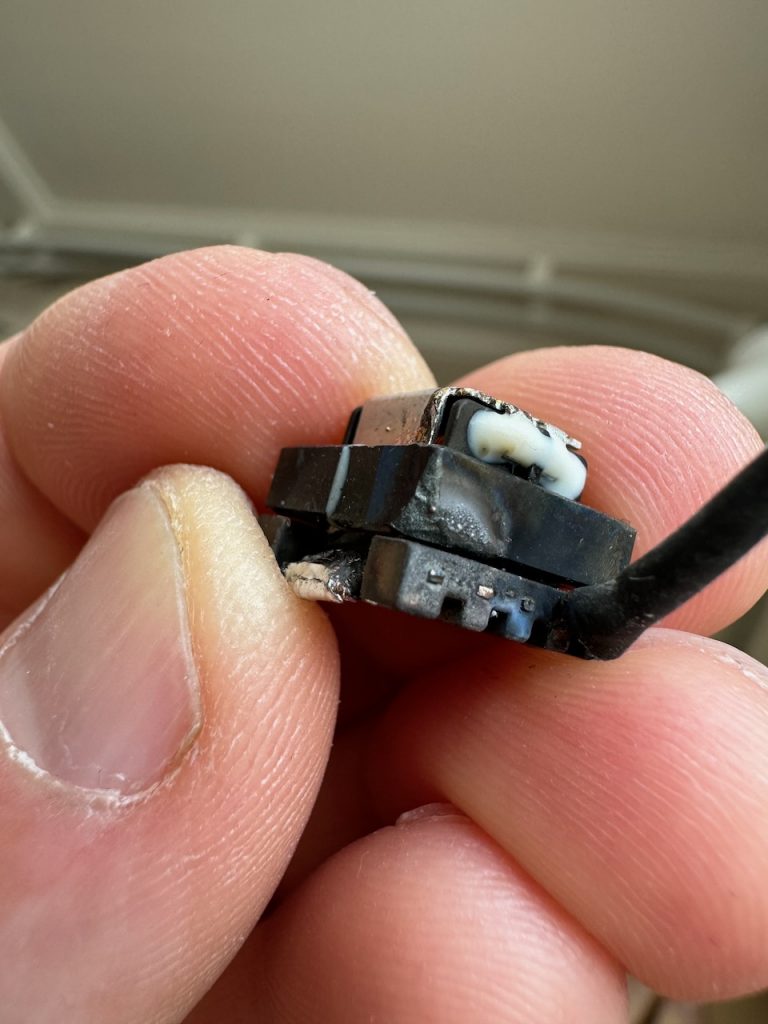
Clearly a quite impressive arc flash had taken place. I think the most likely explanation is that something damp and conductive got in between the boost diode legs and caused the flashover. An arc here would have connected all of the charged DC bus capacitance (4400uF total at 750V!) to the MOSFET drains, causing them to fail explosively from massive overcurrent as soon as they next turned on.
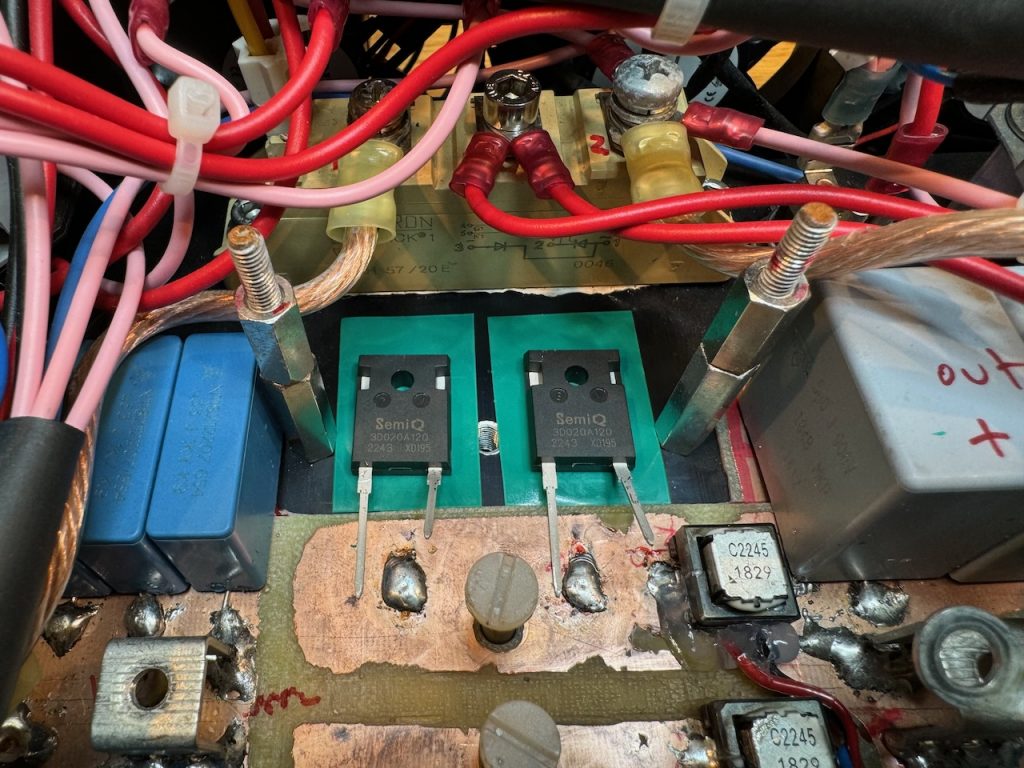
Amazingly the old diodes tested good, though the copper-coated one had a somewhat lower forward voltage. I replaced them anyway with these SemiQ parts that have double the pin spacing.
The annihilated Cree/Wolfspeed SiC MOSFETs were replaced with Infineon IMZ120R060M1HXKSA1.
I forgot to order a replacement CT, so I reinstalled the burnt one with a generous amount of hot glue. It still tested ok for continuity and primary/secondary insulation resistance, and the inductance was reasonable, if a bit lower than its undamaged partner.
Power up was completely uneventful, though the pause while the control power supply gets going can be a bit unsettling. You can see that I added a test socket for viewing the inductor current while I had the unit apart.
It runs happily and the inductor current waveform looks reasonable. I tried overloading the DC output until the 20A breaker on my house circuit tripped, and it seemed to survive that fine.
As this is a post-hoc post, I can say that the PFC also survived Gaussfest 2024 including several performances of Ian Dunne’s theremin.
